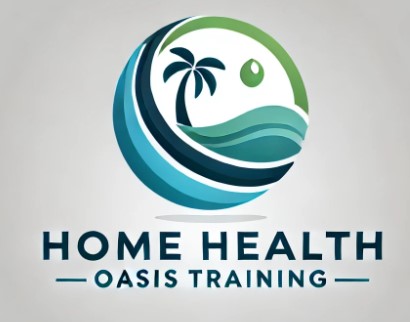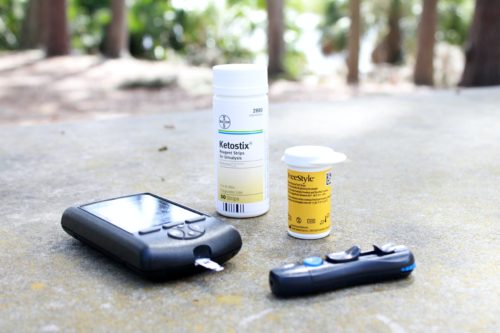Breaking Down the HIPAA Regulations for Home Health Care Providers
In the evolving landscape of healthcare, home health care providers play a crucial role in delivering personalized care to individuals in the comfort of their homes. These providers often manage a range of sensitive information as part of their daily work, including personal health details, medical histories, and treatment plans. Because of the highly sensitive nature of this information, it’s essential that home health care providers adhere to the strict guidelines outlined by the Health Insurance Portability and Accountability Act (HIPAA). This blog explores the HIPAA regulations that home health care providers must follow to ensure the privacy and confidentiality of patient data.
Understanding HIPAA: A Brief Overview
The Health Insurance Portability and Accountability Act (HIPAA) was enacted in 1996 with the primary aim of improving the efficiency of the healthcare system. However, one of its most significant provisions is the establishment of privacy and security standards to protect patients’ health information. HIPAA sets rules regarding how health care providers, health plans, and healthcare clearinghouses (collectively known as “covered entities”) handle protected health information (PHI).
Under HIPAA, health care providers are responsible for safeguarding PHI, which includes any information about a patient’s health, medical conditions, treatment, and payment for care that can be used to identify the patient. HIPAA also created the Privacy Rule and the Security Rule, both of which are critical for home health care providers.
The Privacy Rule: Protecting Patient Information
The Privacy Rule, which was implemented in 2003, sets standards for the protection of individuals’ health information. Home health care providers who handle PHI are required to ensure the confidentiality of patient information. Here’s a breakdown of key aspects of the Privacy Rule that apply to home health care:
-
Patient Consent and Authorization
Home health care providers must obtain explicit consent from patients before disclosing any personal health information. This consent must be in writing, and patients must be informed of their rights regarding the use and disclosure of their health information. If a provider needs to share PHI for purposes beyond treatment, payment, or operations, such as for marketing or research, they must seek patient authorization. -
Limitations on Disclosure
The Privacy Rule also limits the circumstances under which health care providers can share patient information. For home health care providers, this means that PHI can only be shared with other medical professionals, family members, or others involved in the patient’s care if it’s necessary for the provision of care. Any other disclosure requires patient consent or authorization. -
Right of Access
One of the fundamental rights of patients under the Privacy Rule is the right to access their own health records. Home health care providers are required to provide patients with copies of their health information upon request, typically within 30 days. Patients also have the right to request corrections to any inaccuracies in their medical records. -
Data Minimization
The Privacy Rule emphasizes the principle of data minimization, which means that home health care providers should only collect, store, and share the minimum amount of information necessary to provide care. This reduces the risk of exposing unnecessary personal details.
The Security Rule: Safeguarding Electronic Health Information
The HIPAA Security Rule, which was introduced in 2005, focuses specifically on protecting electronic protected health information (ePHI). Home health care providers who store or transmit PHI in digital formats must take additional precautions to protect this sensitive information. The Security Rule outlines specific safeguards that must be in place to ensure ePHI is secure from unauthorized access, loss, or breaches.
There are three key types of safeguards under the Security Rule: administrative, physical, and technical.
-
Administrative Safeguards
Administrative safeguards involve policies and procedures that help manage the security of ePHI. Home health care providers should implement employee training programs that highlight the importance of safeguarding patient data, ensure that staff members understand their responsibilities under HIPAA, and establish protocols for managing and responding to security breaches. -
Physical Safeguards
Physical safeguards focus on protecting the physical locations where ePHI is stored, processed, or transmitted. For home health care providers, this could involve securing mobile devices (such as laptops or tablets) that are used to access patient records in the home setting. Devices should be encrypted and password-protected, and any paper records should be stored in secure, locked areas. -
Technical Safeguards
Technical safeguards refer to the technology used to protect ePHI. For home health care providers, this could include encryption of electronic records, using firewalls to protect networks, and implementing secure login credentials for accessing patient data. Providers must also ensure that data transmitted over the internet is encrypted to prevent unauthorized interception.
Business Associates and HIPAA Compliance
A critical component of HIPAA compliance for home health care providers is understanding their relationship with “business associates.” A business associate is any entity or individual who works on behalf of the provider and has access to PHI. For instance, home health care providers often collaborate with other professionals or third-party services, such as medical transcriptionists, billing companies, or cloud service providers, which could be considered business associates.
Under HIPAA, home health care providers are required to sign a Business Associate Agreement (BAA) with any third party that handles PHI. The BAA ensures that the business associate also follows HIPAA guidelines and is legally bound to protect patient information. Without a signed BAA, home health care providers could be held liable for any breach of confidentiality committed by the business associate.
Risk Analysis and Management
A cornerstone of HIPAA compliance is conducting a comprehensive risk analysis to identify potential vulnerabilities in how PHI is handled. For home health care providers, this means assessing how they collect, store, transmit, and dispose of patient data, both in physical and electronic formats. The risk analysis should cover various aspects, including:
-
Reviewing access controls: Who has access to patient information, and how is that access managed?
-
Evaluating storage and transmission methods: Are patient records stored securely? Are they transmitted using encrypted methods?
-
Reviewing disaster recovery plans: What happens if there’s a data breach or system failure?
-
Monitoring compliance: Are staff members trained on HIPAA regulations, and do they understand the consequences of non-compliance?
Based on the findings of this risk analysis, home health care providers can then implement security measures and protocols to mitigate identified risks and comply with HIPAA regulations.
Breach Notification Requirements
In the event of a data breach, home health care providers must follow strict notification procedures outlined in HIPAA. If there is an unauthorized disclosure of PHI, providers are required to notify affected individuals, the Department of Health and Human Services (HHS), and in certain cases, the media.
Notification to affected individuals must be made without unreasonable delay and no later than 60 days after the breach. The notification must include details about the breach, what information was exposed, and steps the provider is taking to prevent further breaches. The provider must also offer guidance on what patients can do to protect themselves, such as monitoring their credit reports or changing account passwords.
The Role of Training and Policies
For home health care providers, ensuring HIPAA compliance isn’t just about technical safeguards and administrative procedures; it’s also about the culture of privacy and confidentiality within the organization. This begins with employee training and the establishment of clear policies and procedures. Staff members must be trained regularly on the importance of protecting patient information and be aware of the protocols to follow when handling PHI.
Training should cover:
-
HIPAA regulations and compliance expectations
-
How to securely handle and transmit PHI
-
Recognizing and reporting security breaches
-
Proper disposal of medical records and patient data
Additionally, providers should have formal policies in place that outline expectations for staff behavior concerning patient privacy, including rules about accessing records, sharing information, and handling sensitive data.
The Importance of Compliance for Home Health Care Providers
Compliance with HIPAA regulations is not only a legal obligation but also an essential part of maintaining patient trust and safeguarding the reputation of the home health care provider. Failure to comply with HIPAA can lead to severe consequences, including hefty fines, legal liability, and damage to the provider’s credibility.
Home health care providers must stay vigilant and continuously review their practices to ensure they are meeting HIPAA standards. Regular audits, employee training, and technology upgrades will help maintain a culture of compliance and mitigate the risk of data breaches.
Conclusion
As home health care becomes an increasingly integral part of the healthcare system, ensuring the privacy and security of patient information is of utmost importance. Adhering to HIPAA regulations is not only a legal requirement but also a vital responsibility for home health care providers. By understanding and implementing the necessary safeguards, obtaining patient consent, conducting regular risk assessments, and fostering a culture of privacy, providers can protect both their patients and their practice. By doing so, they demonstrate their commitment to high-quality care and the trust that patients place in them.
Editor's Pick
Leave A Comment
Related Posts
- Published On: June 2, 2024
Transition from OASIS-E to OASIS-E1: Key Changes and Implications for […]
- Published On: May 28, 2024
Importance of Clinical Narrative and Nurse Teachings while Documenting Home Health OASIS Assessments
Importance of Clinical Narrative and Nurse Teachings while Documenting Home […]
- Published On: April 29, 2025
Navigating the Complexities of Medicare and Medicaid Reimbursement for Home […]
- Published On: April 27, 2025
Engaging Your Team Around the IPR: Turning Data into Motivation […]
- Published On: April 27, 2025
Engaging Your Team Around the IPR: Turning Data into Motivation […]

